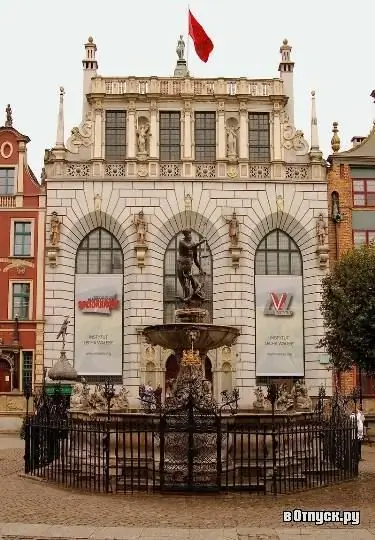
Description of the attraction
Artus's courtyard in the city of Gdansk was erected on the Town Hall Square in 1350. It was the residence of the most respected townspeople - merchants, artisans, members of brotherhoods, members of patrician families. Here the business and social life of the entire city was in full swing, guarded by sculptures of lions, which held a coat of arms in their paws. The building was decorated with a statue of Mercury - the patron saint of the merchant class, and figures-symbols of Power, Justice and Fortune.
The building was damaged in a fire in 1476, the courtyard was restored in 1477 in the Gothic style, as it now appears before us. Abraham van der Blokke rebuilt the façade, and images of kings appeared on the medallions of the portal in the style of mannerism. Georg Stelzner decorated the interior of the house with a 12-meter tiled stove (the largest in the world), faced and painted with images of coats of arms, planets, mythical characters and kings of Europe by master Jost. The respectable interior of the Artus Court is also richly decorated with paintings, models of sailing ships, armor of knights, and various decorations. In 1742 the palace became a stock exchange. In March 1945, the palace was destroyed, but rebuilt in the post-war years, and is still the site of the city's solemn ceremonies.
In front of the Artus Court since 1633, there is a symbol of Gdansk - the Neptune Fountain, installed on the initiative of the then mayor Bartolome Schachmann. It was designed by Abraham van der Block, and the fountain was made by Johann Rogge and Peter Gusen from Augsburg. The athletic figure of the symbolic god emphasizes the city's connection to the sea. A year later, a luxurious fence began to surround it. In 1761, the bowl and the base of the fountain were changed by Johann Karl Stender, placing many sea creatures and monsters on them. According to legend, Neptune was angry that coins were thrown into the fountain for luck. He hit the water with a trident, breaking gold coins into thin threads. It is they who shine in the famous Gdańsk liqueur and herbal infusion.






